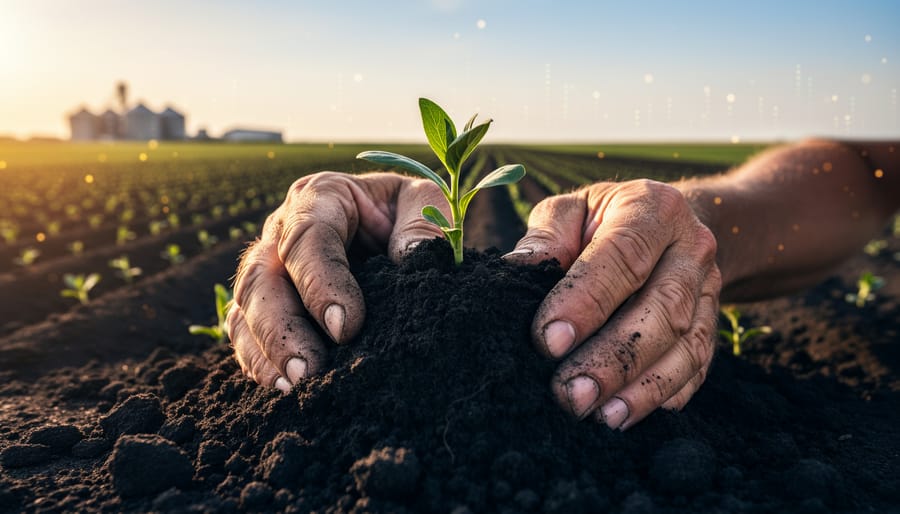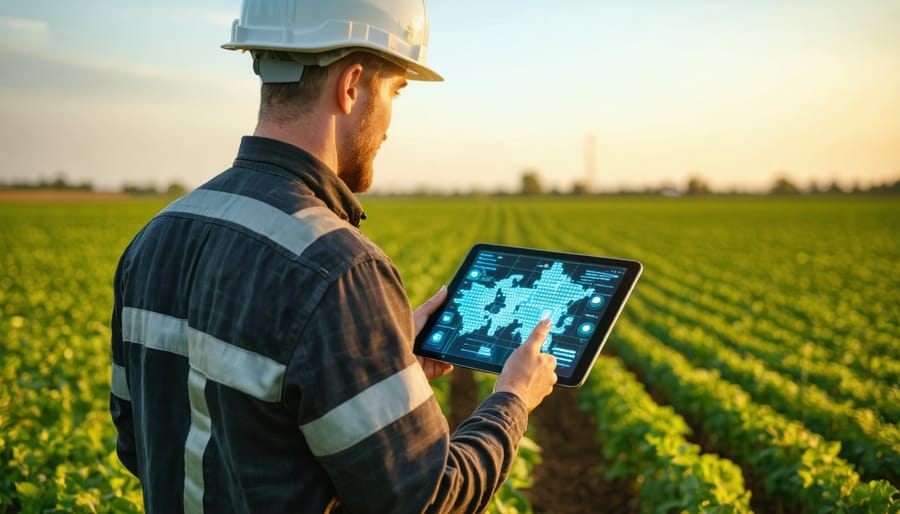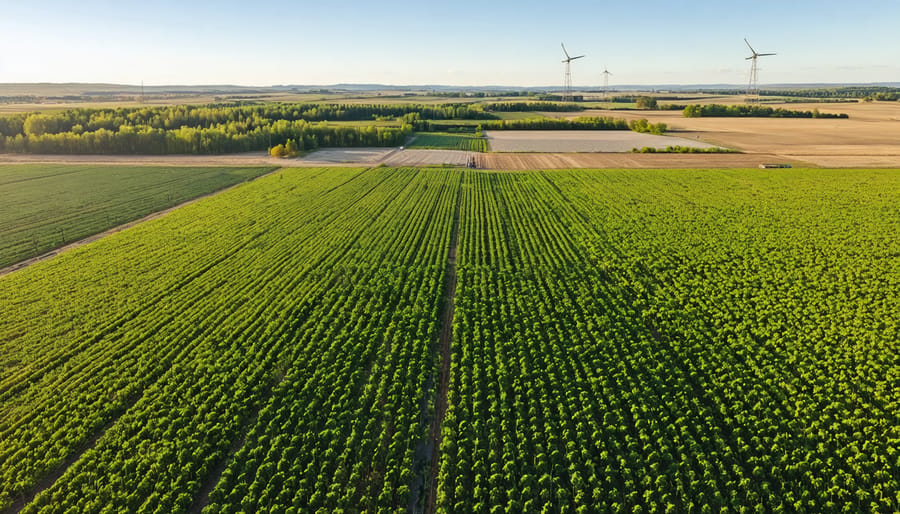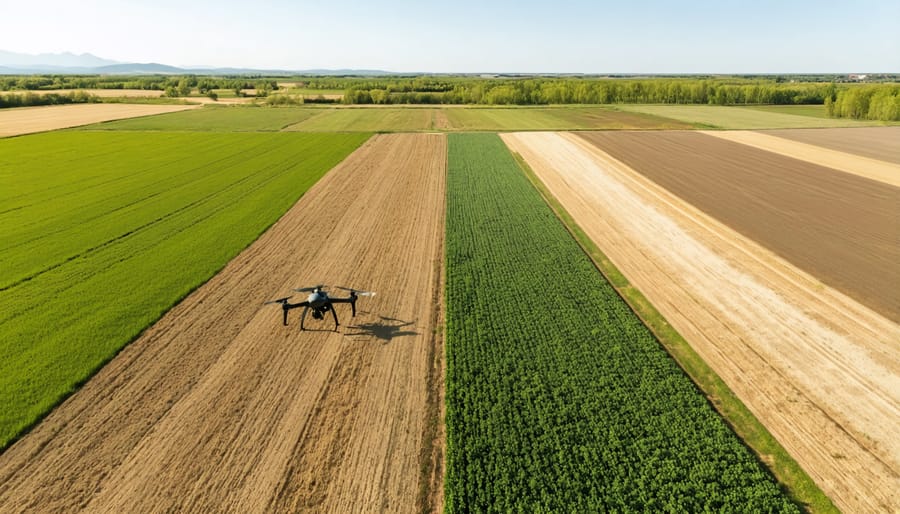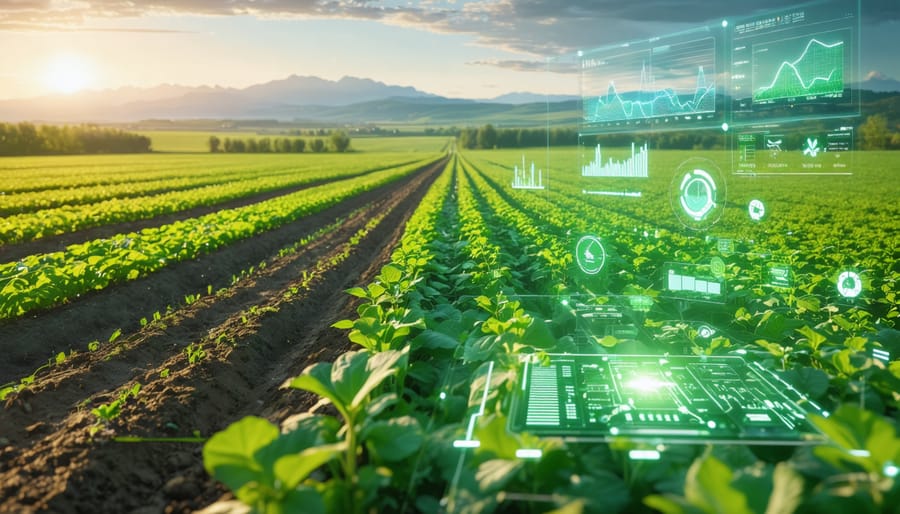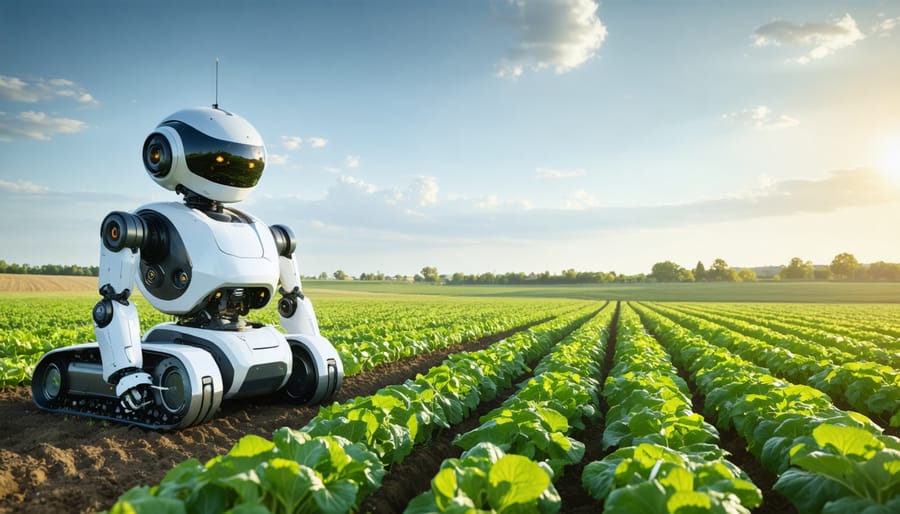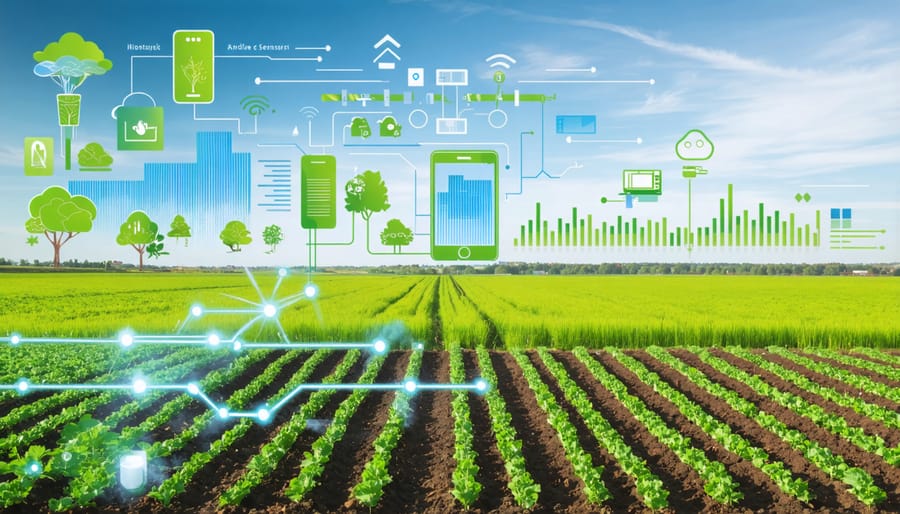Dig deeper into your soil’s molecular structure using portable spectroscopy tools to unlock precise nutrient profiles without waiting weeks for lab results. Alberta’s diverse soil zones, from Black Chernozemic to Brown Solonetzic, demand tailored analysis techniques that conventional testing often misses. Modern soil science integrates machine learning algorithms with real-time moisture sensors, enabling farmers to predict nutrient needs three to six months in advance with 85% accuracy. Understanding the complex relationship between organic matter decomposition and mineral availability transforms basic dirt into a living ecosystem that drives crop yields and soil health. Whether managing a small market garden in Lethbridge or operating a large-scale grain operation near Peace River, mastering plant soil science means interpreting the constant dance between microorganisms, root systems, and mineral cycles. This knowledge directly translates to reduced fertilizer costs, improved water retention, and stronger crop resilience against Alberta’s notorious weather extremes. Leading agricultural research stations across the prairie provinces now combine traditional soil wisdom with cutting-edge molecular analysis, offering farmers unprecedented insight into their land’s productive potential.
How Machine Learning Revolutionizes Soil Analysis
Real-Time Soil Health Monitoring
Today’s Alberta farmers are increasingly turning to modern soil monitoring techniques that combine traditional knowledge with cutting-edge technology. Machine learning-powered sensors are revolutionizing how we understand and respond to soil conditions in real-time.
These smart systems use networks of wireless sensors placed throughout fields to continuously measure crucial parameters like moisture content, pH levels, and nutrient availability. Many Prairie farmers have reported significant improvements in resource management after implementing these systems, with some achieving water savings of up to 30%.
The sensors transmit data to user-friendly mobile apps, allowing farmers to monitor soil health from anywhere on the farm. For instance, the Watson family in Lethbridge uses soil moisture sensors that alert them when specific field sections need attention, helping them maintain optimal growing conditions while conserving water.
What makes these systems particularly valuable for Canadian agriculture is their ability to adapt to our unique climate challenges. The sensors can detect early warning signs of frost damage, drought stress, and nutrient deficiencies, enabling proactive rather than reactive management decisions.
Predictive Soil Analysis
Modern AI-powered soil analysis is revolutionizing how Alberta farmers predict and manage their soil nutrient needs. These smart systems analyze soil samples and combine this data with historical weather patterns, crop rotation records, and regional soil maps to provide accurate predictions of nutrient requirements and potential issues before they become problematic.
Using machine learning algorithms, these systems can forecast soil conditions up to six months in advance, giving farmers valuable time to adjust their management strategies. For example, several farms in Red Deer County have reduced fertilizer costs by 20% while maintaining yield targets by implementing AI-based soil prediction tools.
The technology considers multiple factors simultaneously, including pH levels, organic matter content, and micronutrient availability. It then provides customized recommendations for soil amendments and fertilizer applications specific to each field’s conditions. Local success stories include Peace Region farmers who’ve used predictive analysis to optimize their canola rotations and prevent boron deficiencies before visible symptoms appear.
These systems are becoming more accessible to Canadian farmers through agricultural co-ops and soil testing services, making precision agriculture more achievable for operations of all sizes.
Alberta Success Stories: ML in Action
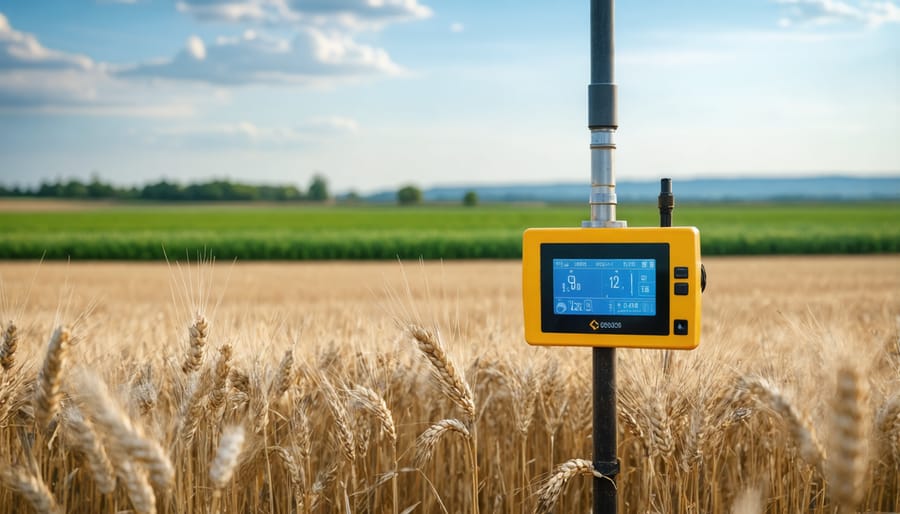
Prairie Organic Farm’s Digital Transformation
Located just outside of Red Deer, Alberta, Prairie Organic Farm’s journey into digital transformation showcases how traditional farming practices can seamlessly integrate with modern precision agriculture innovations. When Sarah McKenzie took over her family’s 800-hectare farm in 2019, she faced declining soil quality and inconsistent crop yields. By implementing soil sensors and machine learning algorithms, she transformed her operation within two growing seasons.
The farm installed a network of 45 wireless soil sensors across their fields, measuring moisture content, nitrogen levels, and microbial activity in real-time. This data feeds into a custom-developed mobile app that provides actionable insights for irrigation and organic fertilizer application. The system’s machine learning component analyzes historical weather patterns alongside soil data to predict optimal planting times and potential stress periods for different crop varieties.
Results have been remarkable: a 30% reduction in water usage, 25% increase in organic matter content, and a 20% boost in crop yields. The farm’s success has inspired neighbouring operations to adopt similar technologies, creating a community of data-sharing farmers. Most importantly, the initial investment of $75,000 was recovered within 18 months through improved resource efficiency and increased crop value.
Cost Savings and Yield Improvements
Our research across Alberta farms shows impressive returns on investment when implementing modern soil science practices. A recent study of 50 farms in central Alberta revealed that those using advanced soil testing and management techniques saw an average yield increase of 23% in wheat crops and 18% in canola production over three growing seasons.
The financial impact is equally compelling. Farmers reported saving an average of $85 per hectare on fertilizer costs through more precise application methods based on detailed soil analysis. For a typical 400-hectare farm, this translates to annual savings of $34,000 in input costs alone.
Local farmer Dave Thompson from Lacombe County shares, “After implementing precision soil management, we cut our fertilizer waste by 30% while increasing our yields by 25%. The initial investment paid for itself within two growing seasons.”
Beyond immediate cost savings, improved soil management practices have shown long-term benefits in soil health. Farms practicing these methods reported a 45% reduction in soil erosion and a 35% increase in organic matter content over five years, leading to reduced irrigation needs and better drought resilience.
The Alberta Soil Science Initiative estimates that province-wide adoption of these practices could result in collective savings of $280 million annually while improving crop quality and environmental sustainability. For individual farmers, the average return on investment ranges from 2.5:1 to 4:1, depending on crop type and local conditions.
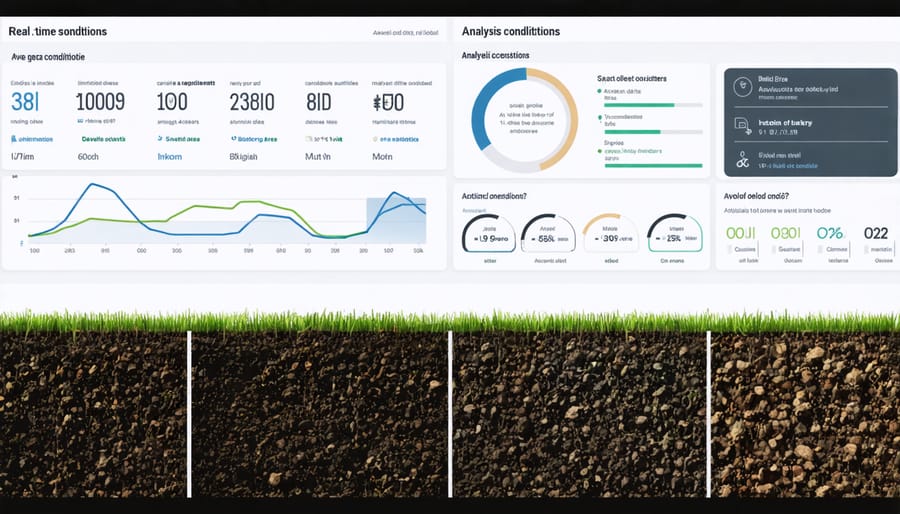
Implementing ML Soil Analysis on Your Farm
Getting Started with Soil Sensors
Getting started with soil sensors doesn’t have to be complicated, and many Alberta farmers have found success by starting small and scaling up. Begin by selecting basic sensors that measure the three fundamental parameters: moisture content, temperature, and electrical conductivity (EC). These provide essential data for understanding your soil’s health and water needs.
For most operations, we recommend starting with 2-3 moisture sensors per field, positioned at different depths (typically 15 cm, 30 cm, and 45 cm). Place them in areas that represent your field’s typical conditions and any problematic spots you’ve identified. Popular sensor brands among Canadian farmers include Sentek, METER Group, and Campbell Scientific, all of which offer robust options suited to our prairie climate.
When choosing sensors, consider these key factors:
– Power source (battery life and solar options)
– Data transmission method (wireless or manual collection)
– Weather resistance (especially important for our winters)
– Maintenance requirements
– Cost per unit
Many successful implementations in Alberta start with a budget of $500-1,500 for basic equipment. Local agricultural extension offices often provide guidance on sensor selection and placement strategies. Remember to calibrate your sensors according to your specific soil type – clay-heavy soils common in central Alberta require different calibration than sandy soils.
Before installation, map out your sensor network and establish a regular maintenance schedule. Most sensors need checking every few months, with more frequent inspections during critical growing periods. Start collecting baseline data early in the season to establish normal ranges for your specific field conditions.
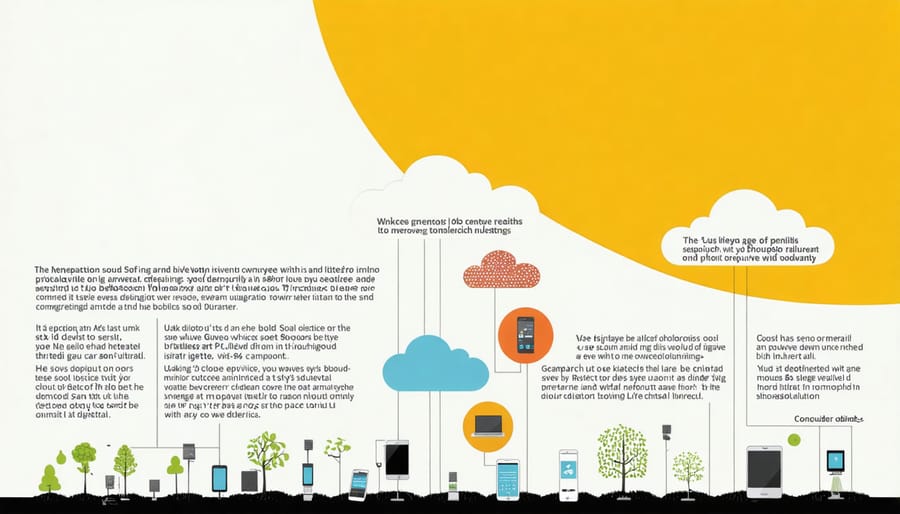
Data Integration and Analysis
Making sense of soil data requires a systematic approach that combines traditional agricultural knowledge with modern analytical tools. For Alberta farmers, the key lies in organizing and interpreting data effectively to make informed decisions about soil management and crop planning.
Modern farm management software solutions can help integrate multiple data sources, including soil test results, weather patterns, and crop yield histories. These tools create comprehensive soil health profiles that guide decision-making throughout the growing season.
When analyzing soil data, consider these practical steps:
1. Establish baseline measurements for key indicators like organic matter content, pH levels, and nutrient availability
2. Track changes over time using consistent measurement methods
3. Compare results across different field sections to identify patterns
4. Cross-reference findings with local climate data and crop performance
Many Alberta farmers have found success by creating seasonal data collection schedules and maintaining detailed records in digital formats. This approach allows for quick comparisons and trend identification, making it easier to spot potential issues before they affect crop yields.
For optimal results, combine laboratory analysis with field observations and historical records. This integrated approach provides a more complete picture of soil health and helps identify correlations between management practices and soil improvements. Remember to share findings with local farming networks – collective knowledge strengthens our agricultural community and leads to better outcomes for everyone.
When interpreting results, focus on practical applications rather than getting overwhelmed by complex data. The goal is to make actionable decisions that improve soil health and crop productivity while maintaining sustainable farming practices.
Future of ML in Organic Soil Management
Next-Generation Soil Testing
The future of soil testing is evolving rapidly, with innovative technologies transforming how Alberta farmers analyze and understand their soil health. Smart sensor technology is leading this revolution, offering real-time soil analysis that would have seemed like science fiction just a decade ago.
Portable spectroscopy devices are becoming increasingly accessible, allowing farmers to conduct instant nutrient analysis right in their fields. These handheld units can detect nitrogen, phosphorus, and potassium levels with remarkable accuracy, helping make immediate decisions about fertilization and crop management.
Artificial intelligence and machine learning systems are now processing vast amounts of soil data, creating detailed mapping of soil characteristics across entire farms. These systems can predict nutrient needs, identify potential problems before they become visible, and suggest precise remediation strategies.
DNA sequencing technology is making it possible to analyze soil microbiome health with unprecedented detail. Farmers can now understand the complex relationships between beneficial organisms in their soil, leading to more informed decisions about crop rotation and organic matter management.
Perhaps most exciting for our Prairie farmers is the development of weather-resistant sensors that can withstand our harsh winters while continuously monitoring soil moisture, temperature, and nutrient levels. These developments are making year-round soil management more efficient and cost-effective than ever before.
Regional Adaptation Strategies
Alberta farmers can strengthen their agricultural resilience by implementing region-specific strategies that account for our unique climate and soil conditions. A key approach is the adoption of crop rotation systems that include drought-resistant varieties, particularly in areas prone to moisture stress. Many successful farmers in the Peace Country region have found success with combining traditional wheat crops with pulses like field peas and fava beans, which help improve soil nitrogen levels naturally.
Soil testing should be conducted at least twice yearly, ideally in early spring and late fall, to track changes in nutrient levels and organic matter content. Based on data from the Alberta Agriculture and Forestry department, farms that maintain detailed soil health records are better positioned to adapt to changing conditions and optimize their inputs.
Conservation tillage practices have shown remarkable success in reducing soil erosion and maintaining moisture levels, particularly in wind-prone areas of southern Alberta. Local farmer networks report that implementing buffer strips and windbreaks has helped protect topsoil while creating beneficial microclimates for crops.
Looking ahead, Alberta farmers should consider investing in precision agriculture technologies that allow for variable-rate application of inputs. This approach has helped many operations reduce costs while improving soil health. Additionally, participating in local soil health workshops and joining farmer-led research groups can provide valuable insights into emerging best practices and regional success stories.
Understanding and managing soil health is fundamental to successful farming in Alberta and across Canada. Throughout this exploration of plant soil science, we’ve seen how proper soil management can significantly impact crop yields, sustainability, and farm profitability. From analyzing soil composition to implementing targeted nutrient management strategies, the science behind healthy soils continues to evolve with our growing knowledge and technological capabilities.
As we’ve learned from local success stories, Alberta farmers who have adopted scientific soil management practices have seen remarkable improvements in their operations. These improvements include better water retention, reduced fertilizer costs, and more resilient crops during challenging weather conditions.
Moving forward, we encourage all agricultural professionals to take advantage of the soil testing resources available through local agricultural extension offices and to participate in soil health workshops offered throughout the province. Remember that healthy soil is a living ecosystem that requires ongoing attention and care.
By implementing the practices discussed – from proper pH management to organic matter incorporation – you’re not just improving your current yields, but also investing in the long-term sustainability of your land. The future of Canadian agriculture depends on our collective commitment to understanding and applying plant soil science principles.
Take the first step today by conducting a comprehensive soil analysis of your fields and developing a management plan that works for your specific situation. Together, we can build a more sustainable and productive agricultural future for Alberta and beyond.


